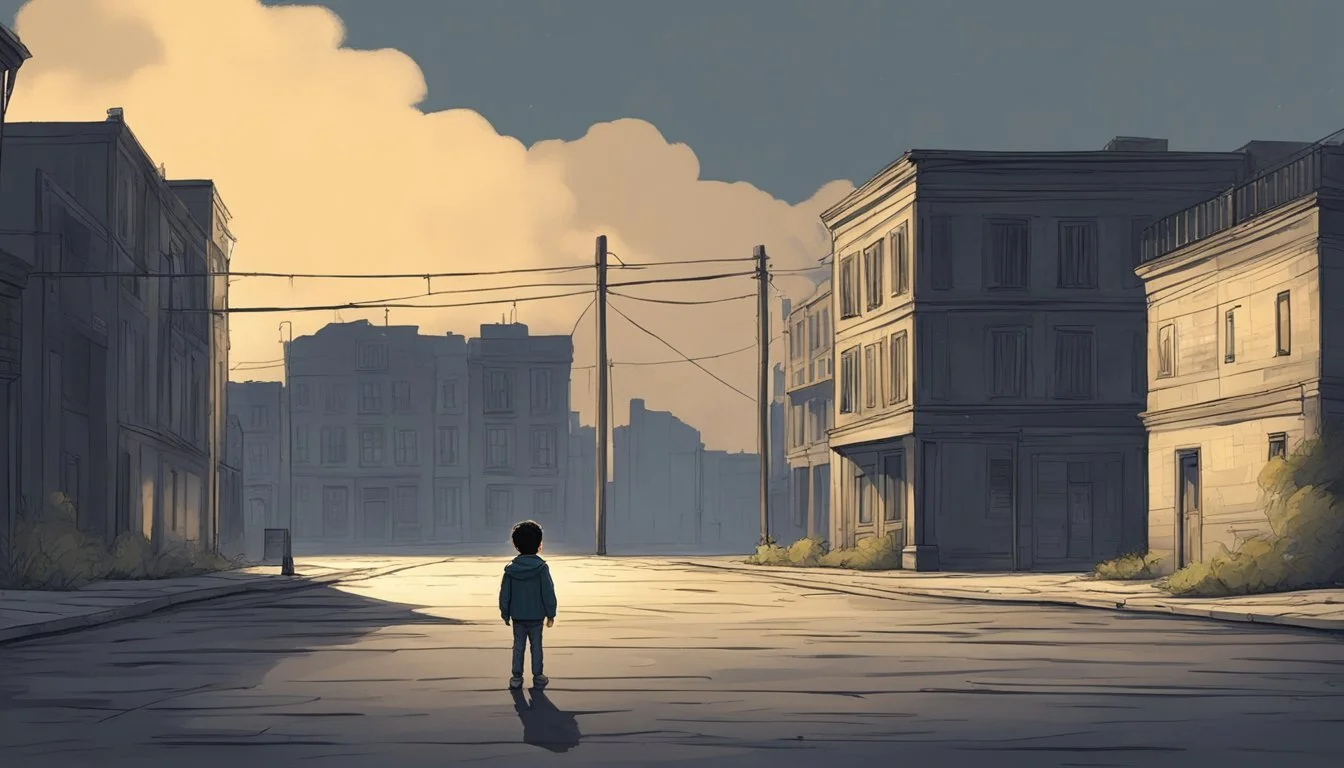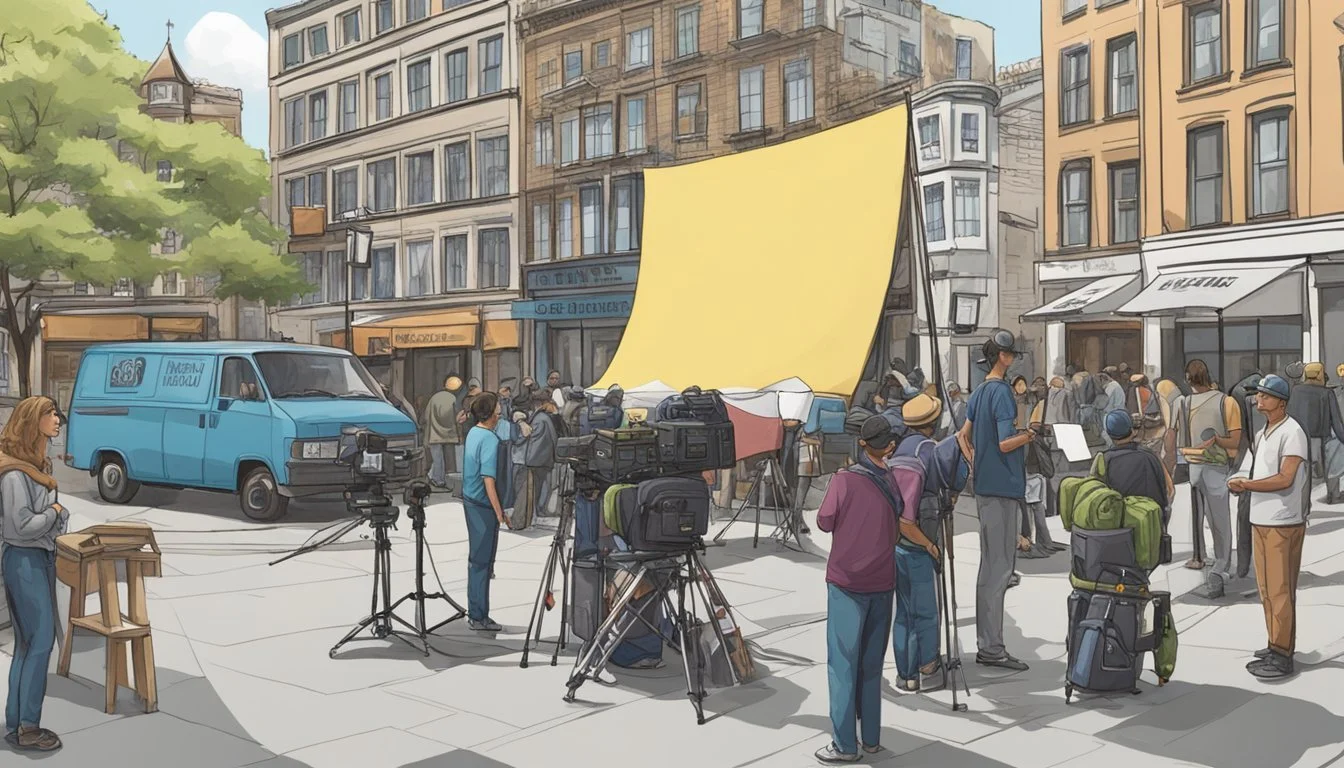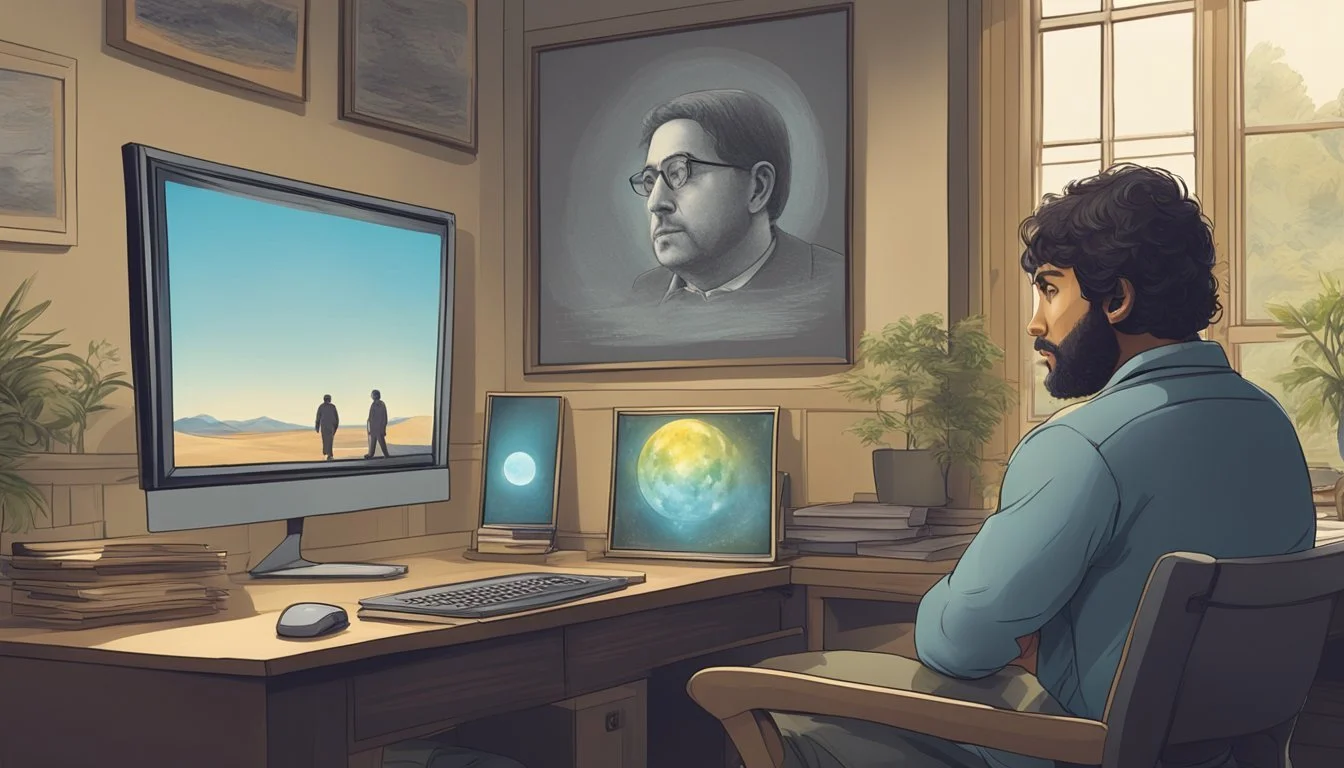Milk Carton Boy's Chilling Vanishing Act: 30-Year Mystery Exposed!
"Who Took Johnny" is a gripping documentary that delves into one of America's most infamous cold cases. The film examines the disappearance of Johnny Gosch, a 12-year-old paperboy who vanished from West Des Moines, Iowa in 1982. Johnny's case gained national attention as he became the first missing child to be featured on a milk carton, sparking a movement that would change how the country approached missing children cases.
The documentary centers on Noreen Gosch, Johnny's mother, and her tireless 30-year quest for answers. Through interviews, archival footage, and investigative reporting, the filmmakers piece together the complex puzzle surrounding Johnny's disappearance. The narrative explores various theories, including allegations of a child trafficking ring and potential government involvement.
"Who Took Johnny" not only recounts the details of this haunting case but also examines its broader impact on American society. The film highlights how Johnny's disappearance led to changes in law enforcement procedures and increased public awareness about child abductions. It serves as a powerful reminder of the enduring pain experienced by families of missing children and the importance of continued vigilance in child safety efforts.
Context of Disappearance
Johnny Gosch's disappearance on September 5, 1982, shook West Des Moines, Iowa. The 12-year-old paperboy vanished during his morning route, leaving behind unanswered questions and a community in shock.
The Early Morning of September 5, 1982
At 6 AM, Johnny Gosch left home to deliver newspapers. He was last seen pulling his red wagon filled with papers near 42nd Street and Marcourt Lane.
Witnesses reported seeing a man in a blue car speaking to Johnny. When Johnny didn't return home, his parents searched the neighborhood.
By 7:45 AM, they found Johnny's wagon with newspapers still inside, but no sign of the boy. The Gosches immediately contacted the police to report their son missing.
Impact on the Gosch Family
The disappearance devastated the Gosch family. Noreen Gosch, Johnny's mother, became a tireless advocate for missing children.
She pushed for changes in how law enforcement handled such cases. Noreen's efforts led to the implementation of the "Johnny Gosch Law" in Iowa, requiring immediate police response to missing children reports.
The family faced ongoing emotional trauma. They pursued leads and theories about Johnny's fate for decades, never giving up hope of finding answers.
West Des Moines Community Response
The community rallied around the Gosch family. Volunteers organized search parties, combing the area for any clues to Johnny's whereabouts.
Local businesses and residents posted flyers with Johnny's photo across the city. The case garnered national attention, making Johnny one of the first missing children featured on milk cartons.
West Des Moines residents remained vigilant, reporting potential sightings and supporting ongoing search efforts. The disappearance forever changed the community's sense of safety and awareness of child abduction risks.
The Search Efforts
The disappearance of Johnny Gosch sparked an extensive search operation involving law enforcement, family members, and the local community. These efforts included immediate police response, ongoing family-led investigations, and widespread public engagement.
First Responder Actions
Police initially treated Johnny's case as a runaway situation, delaying a full-scale search. This decision faced criticism from the Gosch family and community members. Law enforcement eventually expanded their efforts, conducting door-to-door inquiries and searching nearby areas.
Officers interviewed witnesses who reported seeing a suspicious car in the neighborhood. They also examined Johnny's paper route and last known locations. Despite these actions, the initial investigation yielded few concrete leads.
Gosch Family's Endeavors
Noreen Gosch, Johnny's mother, became a tireless advocate for her son's case. She organized independent searches and hired private investigators. Noreen also lobbied for changes in how missing children cases are handled.
The family distributed flyers and utilized media coverage to keep Johnny's case in the public eye. They worked to gather tips and potential sightings, following up on leads across the country.
Noreen's persistent efforts led to Johnny becoming the first missing child featured on a milk carton, a practice that soon became widespread.
Community Involvement
Local residents rallied to support the search for Johnny Gosch. Volunteers organized search parties, combing through neighborhoods and nearby wooded areas. Community members distributed flyers and raised awareness about the case.
Local businesses contributed resources to aid the search efforts. Some offered rewards for information leading to Johnny's whereabouts. Schools in the area implemented safety programs to educate children about potential dangers.
The community's involvement helped maintain public interest in the case over the years. This ongoing support played a crucial role in keeping Johnny's disappearance in the spotlight and generating new leads.
Public Awareness Campaigns
The disappearance of Johnny Gosch sparked several initiatives to raise awareness about missing children. These efforts utilized various media channels and advocacy strategies to educate the public and prevent future abductions.
Milk Carton Initiative
The milk carton campaign became an iconic symbol of missing children awareness. Johnny Gosch was one of the first children featured on milk cartons across the United States. This initiative aimed to reach millions of households daily with images and information about missing children.
The campaign started in the mid-1980s and quickly spread nationwide. Dairy companies printed photos and details of missing children on their milk cartons, hoping that increased visibility would lead to tips or sightings.
While the effectiveness of milk carton campaigns was debated, they significantly increased public awareness about child abductions. The initiative lasted for several years before being phased out in favor of other methods.
Media Coverage
Johnny Gosch's case received extensive media attention, keeping the issue of missing children in the public eye. News outlets regularly covered developments in the investigation and featured interviews with Johnny's parents.
Television programs, including America's Most Wanted, highlighted the case to a national audience. Documentary films, like "Who Took Johnny," further explored the complexities of the investigation and its impact on child safety awareness.
The media coverage surrounding Johnny's disappearance helped maintain public interest in the case for decades. It also shed light on the broader issue of child abductions, prompting discussions about prevention and improved search methods.
Advocacy for Missing Children
Johnny Gosch's mother, Noreen Gosch, became a prominent advocate for missing children's issues. She lobbied for changes in law enforcement procedures and pushed for greater resources in child abduction cases.
Her efforts contributed to the passage of the "Johnny Gosch Bill" in Iowa, which mandated immediate police response to reports of missing children. This law served as a model for similar legislation in other states.
Organizations like the National Center for Missing and Exploited Children were established in the wake of high-profile cases like Johnny's. These groups provide resources for families, work with law enforcement, and continue to raise awareness about child safety and kidnapping prevention.
Law Enforcement and Investigations
The disappearance of Johnny Gosch sparked a complex investigation involving multiple agencies. Law enforcement efforts faced numerous challenges as they attempted to solve this perplexing case over the decades.
Local Police and FBI Involvement
West Des Moines Police Department initially led the investigation into Johnny Gosch's disappearance. They conducted interviews with witnesses and searched the surrounding areas.
The FBI joined the case shortly after, providing additional resources and expertise. Agents worked alongside local law enforcement to follow leads and gather evidence.
Despite these efforts, the case remained unsolved. Critics, including Johnny's mother Noreen Gosch, argued that the initial response was too slow and uncoordinated.
Cold Case Status
Johnny Gosch's disappearance transitioned into a cold case as leads dried up over time. The case file remains open, with periodic reviews by investigators.
New technologies and forensic techniques have been applied to the evidence, hoping for breakthroughs. DNA testing and age-progression images have been utilized in attempts to generate new leads.
The case continues to intrigue the public and law enforcement alike. It has been featured on various true crime shows and documentaries, keeping public interest alive.
Challenges in the Investigation
Investigators faced numerous obstacles in solving Johnny Gosch's disappearance. The lack of physical evidence at the scene made it difficult to determine what happened.
Conflicting witness statements and false leads consumed valuable time and resources. The passage of time further complicated efforts to gather reliable information.
Conspiracy theories surrounding the case added another layer of complexity. These ranged from human trafficking rings to government cover-ups, making it challenging for investigators to separate fact from fiction.
The high-profile nature of the case also attracted attention seekers and false confessions, further muddying the waters for law enforcement.
Evolving Narrative and Theories
The disappearance of Johnny Gosch has generated numerous theories and accounts over the years. Key elements include his mother's persistent investigations, reported sightings, and speculation about organized crime involvement.
Noreen Gosch's Accounts
Noreen Gosch, Johnny's mother, has been a driving force behind the ongoing investigation. She claims Johnny visited her in 1997, accompanied by an unidentified man. Noreen states Johnny told her he had escaped from a child trafficking ring but feared for his safety if he returned home permanently.
Her accounts have evolved over time, incorporating new details and theories. Noreen has written a book and given numerous interviews, maintaining that Johnny was kidnapped by a pedophile ring with high-level connections.
Alleged Sightings and Clues
Several reported sightings of Johnny Gosch have surfaced since his disappearance. In 1982, a woman claimed to have seen him in Oklahoma. Another notable incident occurred in Colorado in 1986, where a boy wrote "Help me. I'm Johnny Gosch" on a bathroom wall.
Mysterious photographs allegedly showing Johnny bound and gagged were sent to his parents in 2006. These images sparked renewed interest in the case but their authenticity remains disputed.
Theory of Organized Crime Involvement
A prominent theory suggests Johnny's abduction was linked to organized crime. Some speculate he was taken by a child trafficking ring with connections to influential figures in politics and business.
This theory gained traction due to claims made by Paul Bonacci, a convicted child molester. Bonacci alleged he was involved in Johnny's abduction as part of a larger criminal enterprise.
The organized crime theory has been bolstered by purported links to other high-profile cases and alleged government cover-ups. Critics argue these claims lack substantial evidence and may be fueled by conspiracy thinking.
Media Representation
"Who Took Johnny" brought renewed attention to Johnny Gosch's disappearance through its compelling documentary format. The film's availability on streaming platforms expanded its reach, influencing public perception of the case.
Documentary Overview
"Who Took Johnny" examines the 1982 disappearance of 12-year-old Johnny Gosch, the first missing child featured on a milk carton. The documentary, released in 2014, focuses on Johnny's mother Noreen Gosch and her tireless search for answers. It explores various theories and conspiracies surrounding the case.
The film combines interviews, archival footage, and reenactments to present a comprehensive look at the investigation. It delves into the complexities of the case, including alleged sightings and potential links to larger criminal networks.
Impact on Public Perception
The documentary reignited interest in Johnny Gosch's case, bringing it to a new generation of viewers. It shed light on the evolution of missing children investigations and awareness campaigns over the decades.
"Who Took Johnny" raised questions about law enforcement's handling of the case and the potential existence of organized child trafficking rings. The film's portrayal of Noreen Gosch's unwavering dedication resonated with audiences, garnering sympathy and support.
Public discussions following the documentary's release led to increased scrutiny of cold cases and missing persons investigations in general.
Continued Interest in the Case
The availability of "Who Took Johnny" on streaming platforms like JustWatch has kept the case in the public eye. Online forums and social media discussions continue to analyze the documentary's content and speculate about new leads.
The film's impact extends beyond Johnny Gosch's case, influencing discussions about child safety and the long-term effects of unsolved disappearances on families and communities. It has inspired true crime enthusiasts to reexamine old evidence and theories.
The documentary's lasting influence demonstrates the power of media in shaping public awareness and maintaining interest in cold cases.
Broader Implications
The disappearance of Johnny Gosch sparked significant changes in how society approaches child safety and missing person cases. It led to new laws, altered public awareness, and influenced investigations of similar incidents.
Changes in Child Safety Measures
Johnny Gosch's case prompted a revolution in child safety practices. Schools implemented stricter protocols for student pick-ups and drop-offs. Parents became more vigilant about supervising their children's activities, especially in public spaces.
Law enforcement agencies developed new strategies for responding to missing child reports. The concept of the "critical first 24 hours" gained prominence in investigations.
Public awareness campaigns emerged, teaching children about "stranger danger" and how to respond to potential threats. Organizations like the National Center for Missing and Exploited Children were established to coordinate efforts and provide resources for families of missing children.
Influence on Legislation
The Johnny Gosch case directly impacted legislation related to missing children. In 1984, Congress passed the Missing Children's Assistance Act, which established a national resource center and clearinghouse for missing children.
Several states enacted "Johnny Gosch laws" requiring immediate police response to reports of missing children. These laws eliminated waiting periods previously required before investigations could begin.
The AMBER Alert system, while not directly resulting from this case, was influenced by the increased awareness it generated. This system rapidly disseminates information about abducted children through various media channels.
Similar Cases: Eugene Martin
Eugene Martin, another Des Moines paperboy, disappeared in 1984, two years after Johnny Gosch. The similarities between the cases raised concerns about a possible connection.
Both boys vanished while delivering newspapers in the early morning hours. Their disappearances occurred in the same city and involved similar circumstances.
The Eugene Martin case reinforced the urgency for improved child safety measures and investigative techniques. It also fueled speculation about organized child abduction rings operating in the area.
Law enforcement investigated potential links between the two cases but found no concrete evidence connecting them. The similarities, however, heightened public fear and led to increased scrutiny of child safety practices in the newspaper delivery industry.
Conclusion
"Who Took Johnny" sheds light on one of America's most haunting missing child cases. The documentary explores the disappearance of Johnny Gosch, a 12-year-old paperboy who vanished in 1982.
Noreen Gosch, Johnny's mother, emerges as a central figure. Her relentless pursuit of the truth spans decades, driving public awareness and legal changes.
The film raises troubling questions about child trafficking networks. It presents theories and testimonies that challenge official narratives, leaving viewers to grapple with unsettling possibilities.
"Who Took Johnny" goes beyond a single case. It examines broader issues of child safety and the evolution of missing persons investigations since the 1980s.
The documentary's impact extends to policy discussions. It highlights the need for improved responses to child abductions and support for affected families.
While providing no definitive answers, the film keeps Johnny Gosch's story alive. It serves as a powerful reminder of unresolved cases and their lasting effects on families and communities.






